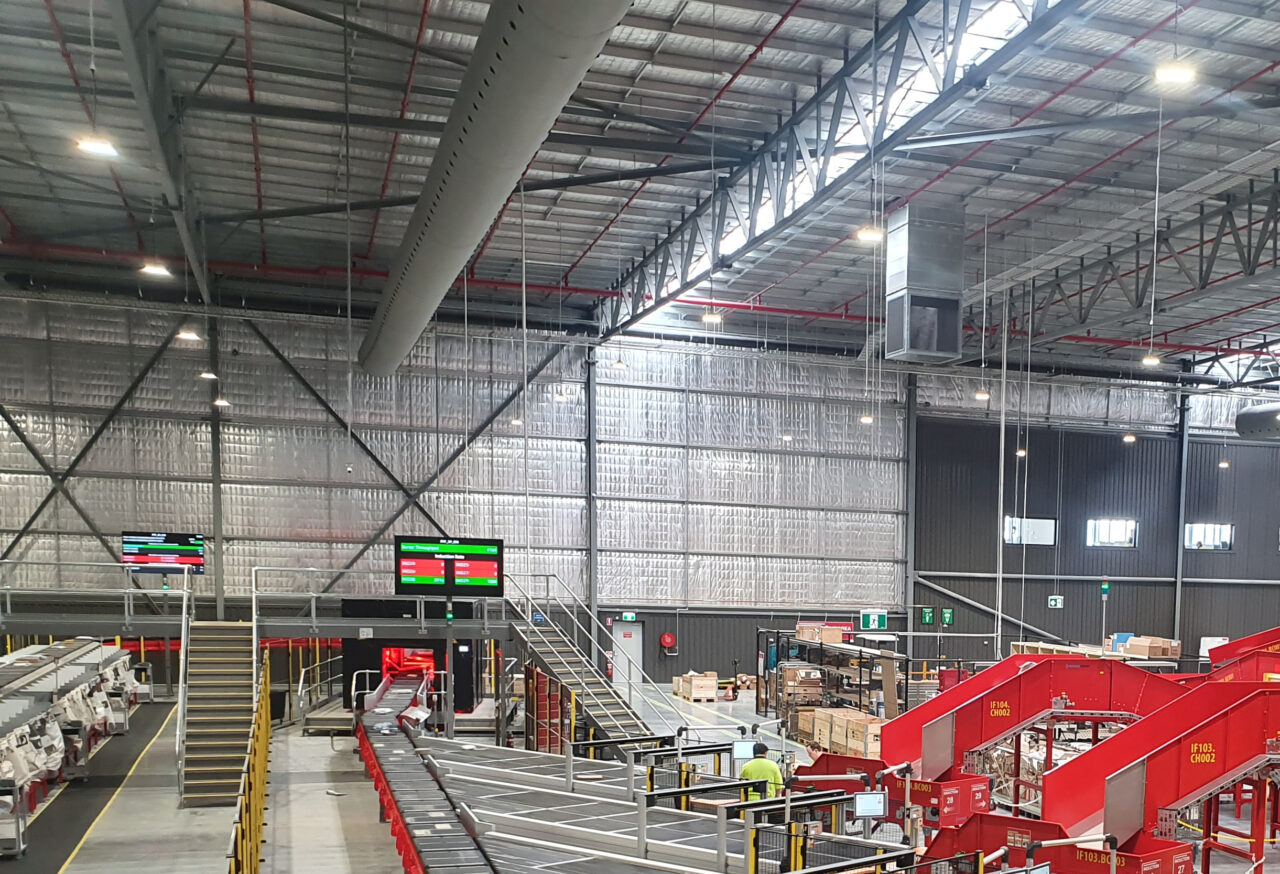Building vertically: Increasing the capacity in existing city centre CEP distribution centres
Distribution centres located in city centres are under increasing pressure to raise their capacities to deal with a worldwide growth in parcel volumes.

Distribution centres located in city centres are under increasing pressure to raise their capacities to deal with a worldwide growth in parcel volumes.
By Bjarne Johansen
Following a nearly two-year period of stagnation that followed the e-commerce boom during the Pandemic lockdowns and restrictions, global e-commerce parcel volumes are now growing at a steady rate of 5 to 8 percent per annum.
However, e-commerce is not the only contributor, as more CEP operators are merging their parcel and letter deliveries, so small parcels and large letters previously delivered by posties are being treated like they are parcels. In some cases, volumes have grown at distribution centres by 40 to 60 percent in just one year.
With this increase in volumes comes a need to raise the capacity of the city centre distribution centres. But in many cases, not only is the distribution centre’s sortation solution, typically a loop sorter, already running at full pelt, but it inhabits every inch of the floorspace.
This leaves the city centre CEP distribution centre with three choices:
A distribution centre in the heart of a major city is generally regarded as the ‘Perfect Location’ for a CEP operator to be based.
From businesses housed in skyscrapers to residents living in high-rises, the density of addresses is immense.
Heavy traffic and parking challenges make deliveries difficult, so it is a huge advantage for CEP operators to already be based there – with no major distances to travel, they are well placed to use a fleet of delivery vehichles (electric) and bicycles, thus circumventing all anti-pollution legislation.
Accessing a major city centre from the suburbs can add an hour a day to the delivery driver’s time behind the wheel.
These are all costly problems that CEP operators want to avoid, but it is becoming increasingly hard given the demand for extra capacity.
The most obvious option is to expand the building.
Sortation solutions in distribution centres are constructed according to a 1:1:25 ratio in line with the building, so there is room to scale up the operation by as much as 25 percent.
But in the absence of space, CEP operators will need to look into the possibility of purchasing more land adjacent to the site of their distribution centre. And in city centres since the start of the century, this has become increasingly expensive.
This is not the only problem. In recent years, it has become almost virtually impossible to obtain planning permission to expand operations in a city centre.
CEP operators based in city centres are subject to heavy legislation to contain the size of their buildings, reduce the pollution and traffic of their vehicles, and not use heavy goods vehicles altogether, which most still depend on for long-haul deliveries – clear signs that local governments want to discourage their presence.
Once encouraged to set up in city centres, local governance has been steadily withdrawing their privileges.
Another obvious solution is to leave the premises and relocate.
While this will disrupt deliveries in the immediate locality, there are many benefits too:
CEP operators with advantageous locations can increase the capacity, and life-span, of their existing sites by building vertically to make more use of the building’s volume.
In the cases of many distribution centres, the ceilings are at least nine metres in height – and often higher.
The average sortation system, meanwhile, is no higher than five metres, meaning there is often at least four or five metres of unused vertical space.
One solution that makes excellent use of this space is a mezzanine.
In some cases, distribution centres have installed mezzanines to create entire new floors to accommodate sortation systems – so in effect doubling their floorspace to double their capacity.
But distribution centres need to be cautious before investing in a mezzanine and new solution. Are they sure the new solution will increase capacity to an optimal level?
Distribution centuries can only answer this question by carrying out an assessment of their processes and requirements – preferably with the help of outside expertise.
Such an assessment might draw attention to how and for what they need to find extra capacity within their own processes. Examples include:

All three of these challenges can be overcome by using a pouch system.
Not only are they perfectly suited to handling small items, tiny parcels and odd shapes, able to retain parcels until they can be conveniently inspected without eating into storage capacity, and capable of sequencing delivery routes, but they can be conveniently installed from ceilings, so there is less need to construct a mezzanine.
This means the pouch system could be hung over the sortation system it is increasing the capacity of.
Only CEP operators with a good handle of their operational processes will be able to assess whether a pouch system will help increase their capacity to the desired level.
And only CEP distribution centres with unused vertical space will be able to capitalise.
But fortunately, heading into these challenging times, this includes the majority of distribution centres that need to increase their capacity.
City centre distribution centres must build vertically and increase their capacity if they want to remain at their current location – because expansion is pretty much impossible due to astronomical property prices and strict local legislation. Fortunately there is a solution that can utilise existing vertical space to double the capacity, whilst additionally optimising processes and overcoming challenges in the areas of sequencing and storage to offer up huge savings to CEP operators.